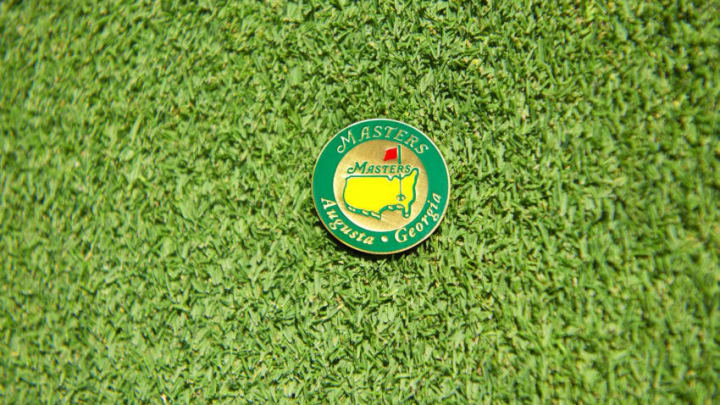It’s a simulated Masters tournament, pitting all 52 former champions for the ultimate Green Jacket.
They won’t be playing the 2020 Masters at Augusta National this week. You know why.
But that doesn’t mean we can’t stage a Masters of our own in a location that’s guaranteed to be coronavirus-free: right here in cyberspace.
Beyond that, we can invite a field so covered in glory that it would be impossible for even the good people of Augusta National to match it.
More from Pro Golf Now
- Golf Rumors: LIV set to sign Masters Champion in stunning deal
- Fantasy Golf: Grant Thornton Invitational DFS Player Selections
- Brutal return leaves Will Zalatoris looking towards 2024
- Stars You Know at World Champions Cup Starts Thursday at Concession
- Fantasy Golf: An Early Look at the 2024 Masters Tournament
Thursday through Sunday, Progolfnow.com will feature the 2020 Virtual Masters, a 52-player simulation pitting the all-time roster of Masters champions against one another. The winner walks away with the title of greatest Masters champion of all time.
Entrance into the field is simple, yet phenomenally difficult. There’s only one rule: you have to have won a Masters Green Jacket.
The 52 entrants in the Virtual Masters are the men who have done that since the tournament was first staged in 1934. Obviously they span nearly a century of the game’s history. They also blanket the planet, representing the United States, Europe, Africa, South America, Australia, and the South Pacific.
Each champion’s performance potential will be normalized to take into consideration the changing nature of the game across time. That normalization will allow players of disparate eras to compete on the basis of their relative skill – as measured against the peers of their own era – irrespective of changes in equipment, course design, training, weather, and a host of other factors.
That normalized player potential will be reduced to a number that represents the average standard deviation of the player’s actual Masters performances during a 10-year peak period. For the Virtual Masters, two rules govern the selection of each player’s “peak period.” It must include the season of at least one of the player’s Masters championships, and the years must be consecutive.
As the performance potential of the 52 players are presented in subsequent introductory articles this week, you will see that performance potential referenced. They range from -1.91 for the pre-tournament favorite, Arnold Palmer, down to +1.35 for the 52nd ranked competitor, Danny Willett.
Keep in mind that since these numbers rank the average standard deviation of the player’s actual Masters performance – and since golf is a game where less is more – the more negative the number the better a player likes it.
But keep in mind also that even in a virtual scenario, golf is a game where the competition is closely matched and strange things happen. That being the case, you can’t just presume that the fellow with the best profile will emerge as the champion of the Virtual Masters.
In fact, the balanced nature of the field ensures that as many as two dozen of the virtual competitors has a legitimate chance to don the Virtual Green Jacket by next Sunday night.
To get you started anticipating the arrival of some golf – even if only of the virtual variety – here is a list of the 52 competitors. The players are presented decade by decade in the chronological order of their first Masters’ victory.
1930s: Horton Smith, 1934, 1936, Gene Sarazen, 1935, Byron Nelson, 1937, 1942, Henry Picard, 1938, Ralph Guldahl, 1939
1940s: Jimmy Demaret, 1940, 1947, 1950, Craig Wood, 1941, Herman Keiser, 1946, Claude Harmon, 1948, Sam Snead, 1949, 1952, 1954
1950s: Ben Hogan, 1951, 1953, Cary Middlecoff, 1955, Jack Burke Jr., 1956, Doug Ford, 1957, Arnold Palmer, 1958, 1960, 1962. 1964, Art Wall Jr., 1959
1960s: Gary Player 1961, Jack Nicklaus, 1963, 1965, 1966, 1972, 1975, 1986, Gay Brewer, 1967, Bob Goalby, 1968, George Archer 1969
1970s: Billy Casper, 1970, Charles Coody, 1971, Tommy Aaron, 1973, Raymond Floyd, 1976, Tom Watson, 1977, 1981, Fuzzy Zoeller, 1979
1980s: Seve Ballesteros, 1980, 1983, Ben Crenshaw, 1984, 1995, Bernhard Langer, 1985, 1993, Larry Mize, 1987, Sandy Lyle, 1988, Nick Faldo, 1989, 1990, 1996
1990s: Ian Woosnam, 1991, Fred Couples, 1992, Jose Maria Olazabal, 1994, 1999, Tiger Woods, 1997, 2001, 2002, 2005, 2019, Mark O’Meara, 1998
200s: Vijay Singh, 2000, Mike Weis, 2003, Phil Mickelson, 2004, 2006, 2010, Zach Johnson, 2007, Trevor Immelman, 2008, Miguel Angel Cabrera, 2009
2010s: Charl Schwartzel, 2011, Bubba Watson, 2012, 2014, Adam Scott, 2013, Jordan Spieth, 2015, Danny Willett, 2016, Sergio Garcia, 2017, Patrick Reed, 2018
On Monday, we will have a look at the top ten statistical favorites to win the Virtual Masters. Turn in all week for favorites, longshots, recaps and more!
